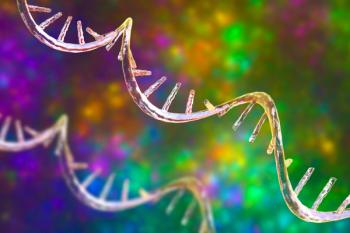
BIO and Battelle Release State-By-State Analysis of Bioscience Trends
The nation's bioscience industry continues to grow as states and regions vie to attract high-wage jobs, according to a study released on June 18, 2008, by Battelle (Columbus, OH) and the Biotechnology Industry Organization (BIO, Washington, DC).
The nation's bioscience industry continues to grow as states and regions vie to attract high-wage jobs, according to a study released on June 18, 2008, by Battelle (Columbus, OH) and the Biotechnology Industry Organization (BIO, Washington, DC).
The study, “Technology, Talent and Capital: State Bioscience Initiatives 2008,” presents data on national, state, and metropolitan bioscience employment and growth trends during 2001 to 2006. The study also examines a series of additional key performance metrics and describes state policies and programs designed to accelerate the growth of the biosciences. The report has been produced from the most current and comparable annual data available.
Total US employment in the biosciences reached 1.3 million in 2006, up from 1.2 million in 2004, led by strong growth in the research, testing, and medical laboratory subsector, which experienced a 17.8% increase in employment and a 32.7% increase in establishments between 2001 and 2006. Indirect and induced employment from the bioscience industry totals an additional 6.2 million jobs spread throughout the remainder of the economy.
Together, these direct, indirect, and induced jobs account for a total employment impact of 7.5 million jobs.
Following are some of the findings in the report:
- The bioscience sector is a source of high-wage jobs. The average bioscience job paid $71,000 in 2006, $29,000 more than the average private-sector job.
- Each bioscience job generates an additional 5.8 jobs in the national economy.
- Thirty-five states, the District of Columbia, and Puerto Rico have an employment specialization (20% or more concentrated than the nation) in at least one of the four bioscience subsectors (drugs and pharmaceuticals; medical devices and equipment; research, testing, and medical laboratories; and agricultural feedstock and chemicals).
- Twelve states-California, Illinois, Indiana, Iowa, Massachusetts, Minnesota, New Jersey, North Carolina, Ohio, Pennsylvania, Tennessee, and Texas-have both a large (more than 5% of total US employment) and specialized bioscience base in at least one of the bioscience subsectors.
- Of the nation’s 361 Metropolitan Statistical Areas, 202 have an employment specialization in at least one of the four bioscience subsectors, up from 193 in 2004.
In addition to employment, the report examines other indicators of the robustness of a state’s bioscience industry, including the level of bioscience R&D funding, venture capital investment, and patents. The highlights of additional key indicators include:
- Academic bioscience R&D expenditures total $29 billion in FY 2006.
- US higher education institutions awarded more than 143,000 bioscience-related degrees in the 2006 academic year.
- Venture capital investments in bioscience companies reached $11.6 billion in 2007.
- More than 82,000 bioscience-related patents were issued to US inventors between 2002 and 2007.
The study and individual profiles of the 50 states and Puerto Rico are available on the BIO website at
Newsletter
Stay at the forefront of biopharmaceutical innovation—subscribe to BioPharm International for expert insights on drug development, manufacturing, compliance, and more.




